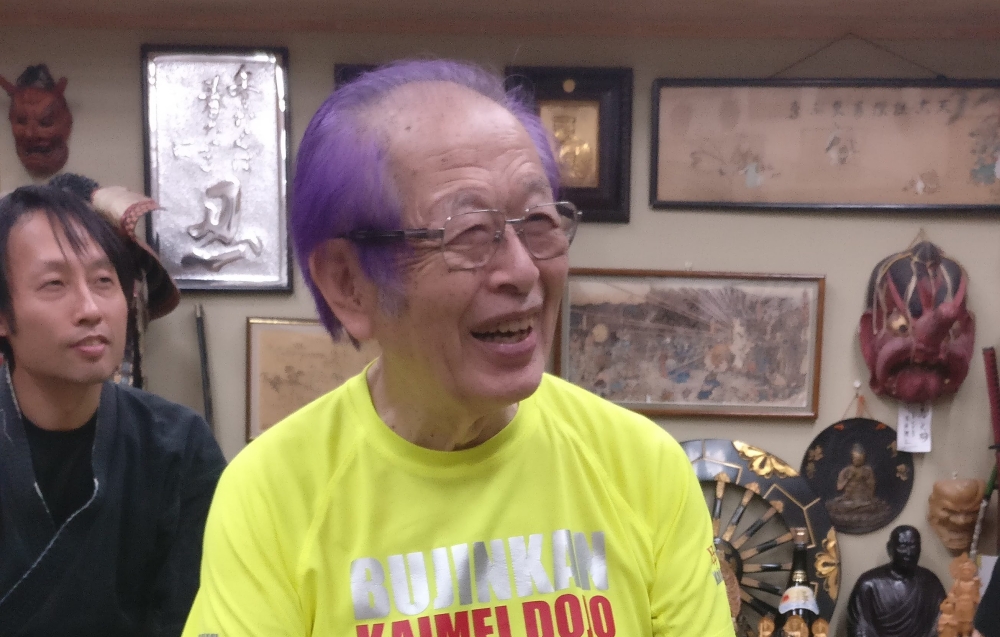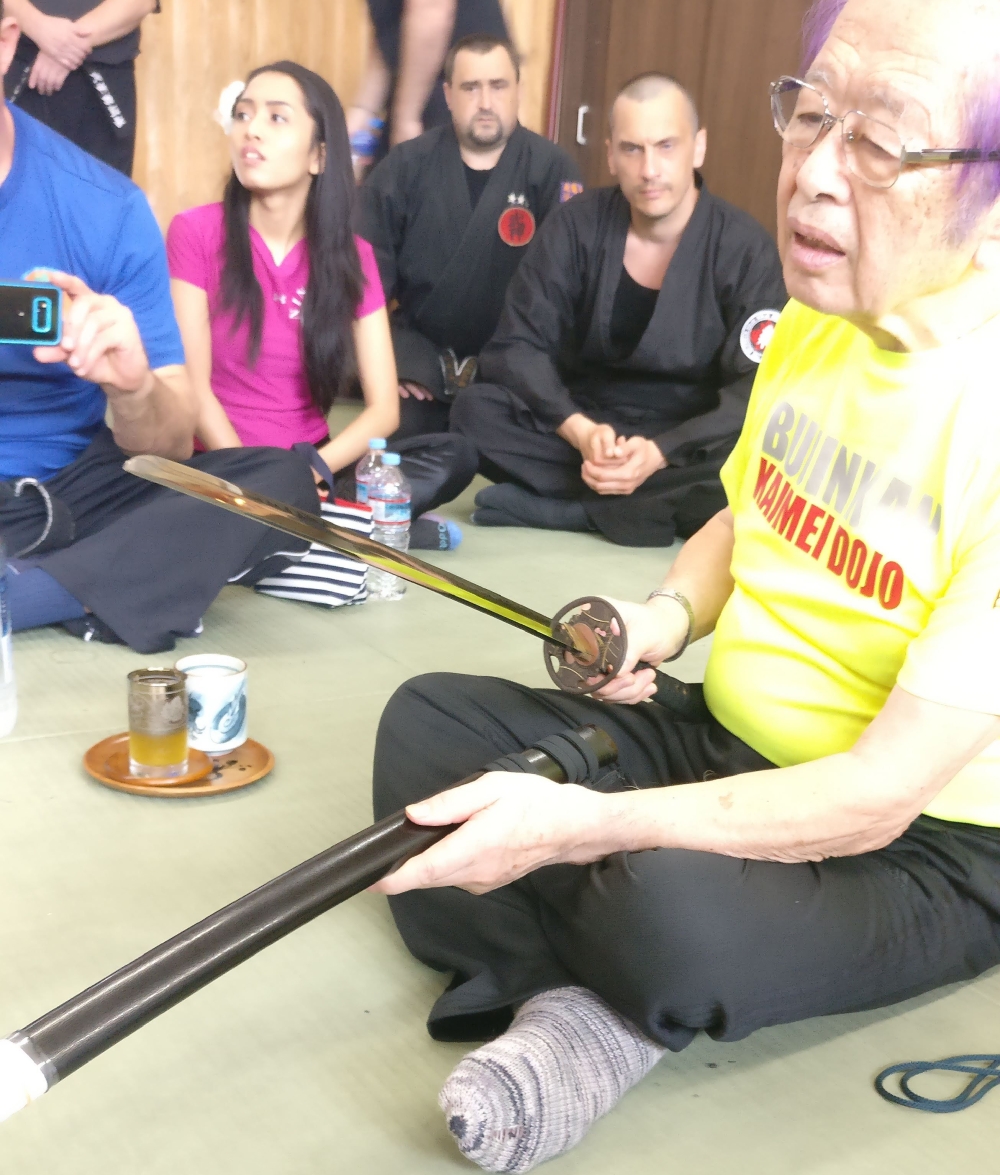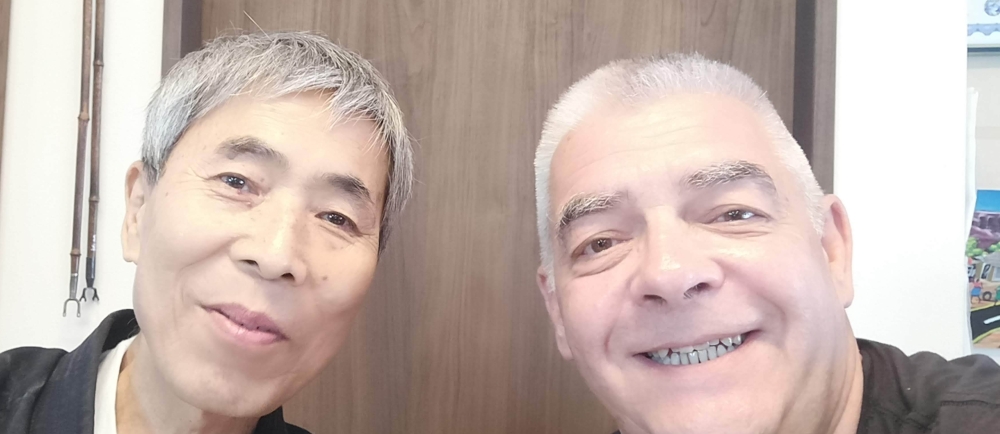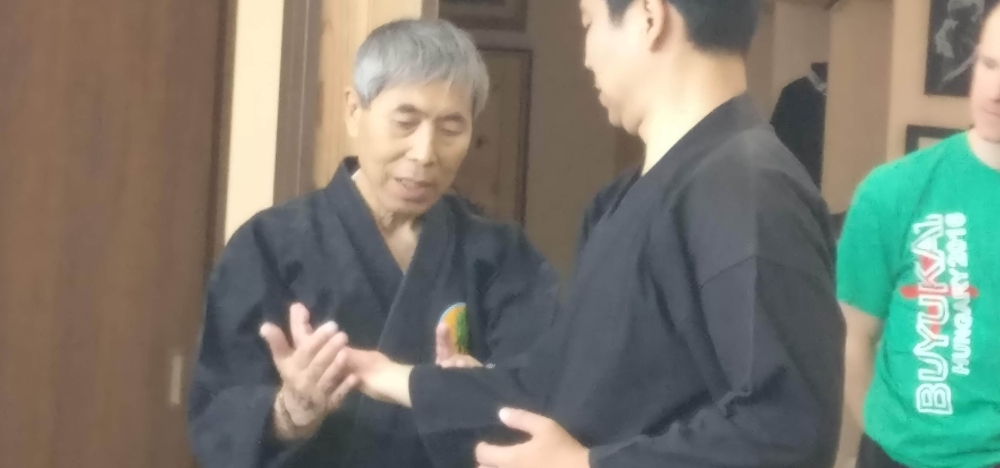Hi No Ken
From Shiro Kuma by kumafr
 Each class with Sensei brings more depth to the understanding of “control.” We trained taijutsu, knife, hanbō, sword, bō, and yari yesterday. I can summarize it in one set of words: “Hi no Ken.” (1)
Each class with Sensei brings more depth to the understanding of “control.” We trained taijutsu, knife, hanbō, sword, bō, and yari yesterday. I can summarize it in one set of words: “Hi no Ken.” (1)
The control is the same whatever weapon you use, “Hi no Ken” applies to everything.
As I opened the training session, I was lucky to be Uke. He controlled me immediately after I attacked. Being Uke is the best way to learn. You see what he is doing, you understand it. But then you still cannot avoid or counter.
When you try to reproduce it, it is impossible to do. This is mysterious. It is like a fall on an icy floor, you witness it while it is happening, but there is no way to avoid it.
It is hard to describe. As if Sensei was not moving in the same dimension of time and space. When you attack, you are defeating yourself. He tried to helps us: “move together with the attacker”; “don’t do anything “; “Uke’s energy is my energy.” But these are only words, what you feel is much more.
The quality of his control over your actions is total, permanent and invisible. When you reach him, you don’t. You come in contact with one of his fingers, and you stay there in an Ukabu state. (2) You are suspended in mid-air, unable to move. He controls you within the space of your attack. (3)
During an exchange with swords, the blocking was an absorption so perfect that it looked like a dance. His sword met Uke’s sword and he turned around him. After that, he counterattacked with a rapid blow to the temporal bone. It was fast and slow at the same time.
The first point of contact between the swords is a Shiten (4) It is dynamic, and sliding. Not giving any force to the opponent, Sensei turns around him, not giving him a chance to adjust his next move. Uke is unable to take any action. He said, “it is not Kendō, do not oppose the attacker, move with him. “Tatakai wa Janai,” there is no fight, no confrontation.” Instead, you disappear in plain sight.
The quality of the contact and of the distance is perfect. The attacker lies there, suspended in the air, this is Ukabu. There is no force involved, Uke stays in a waiting state. But he doesn’t fall because the small support given by the sword or the finger is enough to hold him in position. Then Sensei releases it, and Uke collapses on the ground.
Asked to explain what they felt, Sensei’s Uke couldn’t say. It felt like they were trapped like flies in a spider web. In this situation, the only way to stay alive a little longer is to not move after the first attack. Watching it was nice but feeling it was even better. Sensei said that “only those who experience it, have a small chance to get it.” I didn’t. What you feel with your senses is not the reality. As I wrote, you understand, but you are unable to reproduce it. It is a very high-level skill that Hatsumi Sensei showed us yesterday night.
With Thomas Heidenreich, my training partner, we did our best, but we couldn’t get close to that. During class, I spoke with my friends Doug, Oliver, Yabunaka, and others, it was not helping either. We were all lost. What was amazing is that Sensei does the same trick with all the weapons. It is not only a sword or a taijutsu thing, but he can also do it with anyone and any weapon. He always has the perfect distance and the perfect timing.
The depth of Hatsumi sensei’s control is impossible to match. When I watch this 87-year-old man moving, I often wonder if we will be able to run like him one day. Don’t get me wrong. Sensei is human, and what he does is reachable. But how many more years do we need to get to his quality of movement?
Graf Durkheim wrote, “we understand the quality of the depth by its relation to the depth of the quality.” Hi no, Ken is the depth of the quality of control.
Doing a sword counter, Sensei said, “Cut the opponent or don’t, it doesn’t matter, the important is to control.”
Control is beyond waza, it is not a technique, it is something else.
_________________________
1. Hi no Ken the secret sword. It comes from Himitsu 秘密; mystery, secret, esoteric teaching.
2. Ukabu 浮かぶ; to float; to be suspended, but also: to come to mind; to have inspiration.
3. Read this previous post: https://kumablog.org/2018/07/23/the-space-within/
4. Shiten 支点; fulcrum.…
 During the past months, Hatsumi sensei has been insisting on not avoiding Uke’s attacks. He has been repeating it, each class since I arrived.
During the past months, Hatsumi sensei has been insisting on not avoiding Uke’s attacks. He has been repeating it, each class since I arrived.


 When you train with Sōke, what is important is not what you see, but what you don’t. If you want to understand Sensei’s techniques, study the way he walks. This is the secret.
When you train with Sōke, what is important is not what you see, but what you don’t. If you want to understand Sensei’s techniques, study the way he walks. This is the secret.